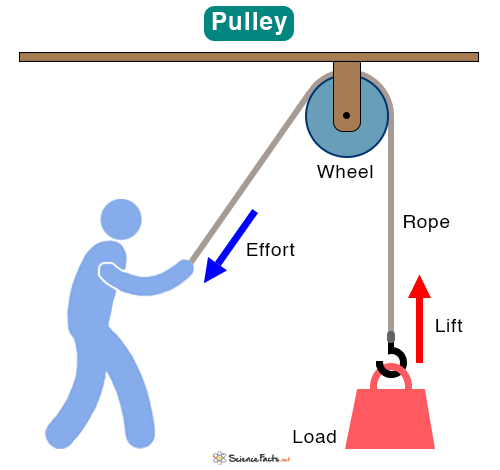Oscillatory Motion
Oscillatory motion is a back-and-forth motion of an object about an equilibrium position. Such motion is possible only when a restoring force or torque acts on the object. The force or torque restores the object to its equilibrium position no matter in which direction it is displaced. Oscillatory motion is essential to study real-life phenomena like electromagnetic waves and alternating currents.
Examples
Here are some examples of oscillatory motion.
- Oscillations of a pendulum
- Vibration in a spring
- Motion of a wheel
- Movement of a seesaw
- Vibrations in guitar strings
- Alternating current in household equipment
- Electromagnetic waves passing through the air
The example below shows a pendulum oscillating about its point of suspension. It passes through points A, B, and C during its oscillations.
Simple Harmonic Motion
A simple harmonic motion is an oscillatory motion in which an object moves to and fro along a straight line about an equilibrium position. Its vibrations are said to be linear. The object’s motion is such that the restoring force changes its direction and tends to bring it back to the equilibrium position. However, due to the stiffness and inertia of the object, it shoots past the equilibrium position. The process repeats and results in an oscillatory motion. The object’s kinetic and potential energy changes over time. The sum of the two remains constant due to the energy conservation law.
Equation
Consider a spring-mass system on a horizontal surface, as shown in the image. According to Hooke’s law, the restoring force on the oscillating object is proportional to its displacement.
Where
F is the restoring force
x is the displacement
k is the spring constant
From Newton’s second law
Where
m is the mass of the object
Comparing the two equations
Where
The above equation is a second-order linear differential equation whose solution is given by
Where
A is the amplitude
ω is the angular frequency
t is the time
ø is the phase difference
The constants A, ω, and ø can be determined by the boundary conditions of the system.
Damped Harmonic Motion
In the discussion above, we have neglected the frictional force in the system. Generally, friction occurs between the object and the horizontal surface on which it oscillates. The result is that the oscillations tend to decay with time. Such oscillatory motion, where a damping or resistive force is present, is called damped harmonic motion.
Equation
Consider the spring-mass system again, but it acts like a damped oscillator this time. The damping force is found to be proportional to the object’s velocity. The second-order differential equation modifies to
Where b is an arbitrary constant. The term
Where
Where
The exponential term in the expression is the decay function, and β is the damping coefficient. There are three types of damped oscillators:
- under-damped, when β < ωo
- over-damped, when β > ωo
- critically damped, when β = ωo
FAQs
Ans. The difference between periodic motion and oscillatory motion is that an oscillatory motion is the back-and-forth motion of an object. The periodic motion is a pattern of movement that repeats over some time. Oscillatory motion is a type of periodic motion.
-
References
Article was last reviewed on Thursday, April 6, 2023










I did not understand how you derive the equation
The equation for simple harmonic motion can be derived from Newton’s second law which states that force is equal to mass times acceleration.